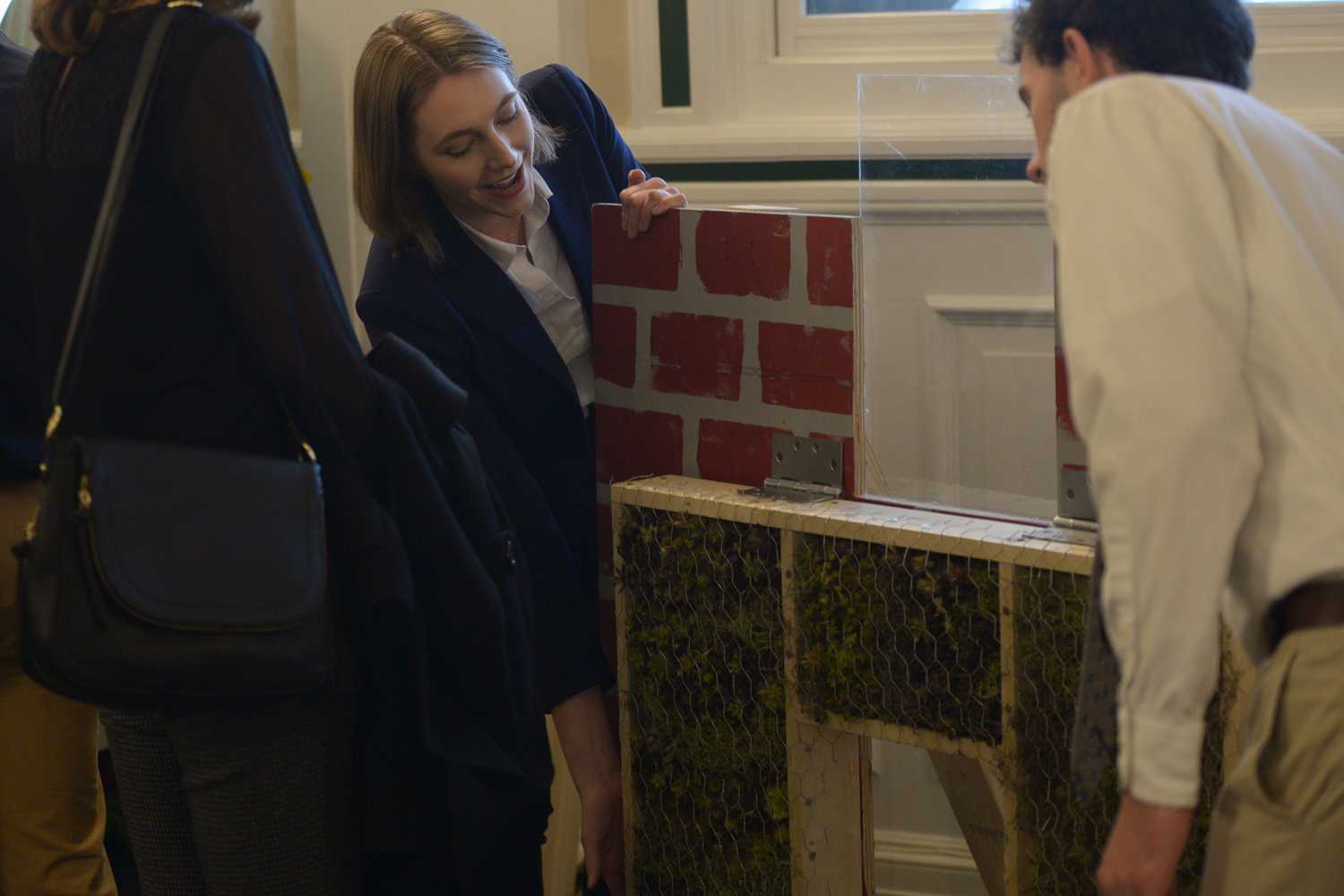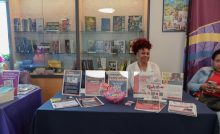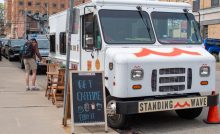Engineering students present projects at Swanson School of Engineering Design Expo


Design students showcase their projects at the Spring 2018 Swanson School of Engineering Design Expo in the Soldiers and Sailors Memorial Hall Thursday evening. (Photo by Sarah Cutshall | Staff Photographer)
After countless hours of designing, coding and calculating, more than 400 engineering students of various disciplines traded their polo shirts and safety glasses for bow ties and blazers Thursday evening at the Spring 2018 Swanson School of Engineering Design Expo.
The expo, held at the Soldiers and Sailors Memorial Hall Museum, allowed students to display their creativity and ingenuity in addressing real-word problems — from patients suffering from a lack of light in hospital rooms to people forgetting to take their medications.
Monica Bell, special projects coordinator for the Swanson school responsible for the logistics of the event, said the goal of the expo was to showcase the projects students had been working on all semester. This was the fourth expo since fall 2016, with the event being held once every semester.
Judges wandered from table to table, assessing criteria such as innovativeness, approaches to the problem, technical performance and overall impact. There was also a People’s Choice Award, where attendees could vote for their favorite projects by texting a certain number. Prizes included gift cards for the The University Store on Fifth, the value of which depended on the number of group members.
Kelsey Williams, a senior mechanical engineering major and member of one of the winning groups, described the special “strike meter” — a digital device that martial arts students can use to measure their punch or kick power — her group created.
“A lot of strikes in martial arts are meant to hurt someone deep in their body, so [we put] a sensor at the front and back of a bag,” Williams said. “We used a depth-force sensor so people can test if they’re smacking the surface or if they’re actually hurting the person.”
Williams said inside the bag is a ballistics gel, meant to replicate human tissue to give a more accurate experience for the person striking the bag. The group also used JavaScript to send data from the bag to an iPhone app using a Bluetooth module. But as successful as Williams’ group was at the expo, they faced some obstacles along the way.
“The first round of the gel we made ended up breaking down and becoming moldy,” Williams said. “So we had to add a chemical probiotic acid to it in order to stop it from getting moldy, and we had to vacuum-seal it.”
After hearing her group won third place for the mechanical engineering category, Williams was thrilled.
“I feel really great,” Williams sad. “That was honestly one of my goals in the beginning of the semester. I thought it would be really cool to get [an award].”
First-year students Emily Zuris and Melissa Mathias, majoring in bioengineering and chemical engineering, respectively, presented a prototype they called “Sense-itivity.” The group created a small glowing orb-like object powered by a Bluetooth speaker and LED lights that projects ambient light and calming nature sounds like chirping birds, beach waves and rainfall. Zuris said the project was inspired by people’s negative emotions toward the blandness of hospital rooms.
“A lot of hospital rooms are white, gray or beige, so filling the room with more light helps [improve] one’s mood,” Zuris said. “We have an app, in which you can choose from a few different settings like sunrise, rainforest or beach, and they all have natural tones that will project around the room.”
Mathias said the group stumbled into some problems, although that was to be expected with a project that takes an entire semester to complete.
“Most of us don’t have any prior coding experience, specifically with the lights, so a lot of it was learning as we were going,” Mathias said. “We didn’t get as much movement in the lights as we wanted to. Ideally, we would’ve liked to have a setting where if it was the rain [sound], the display would move down vertically to mimic the rain moving down.”
Zuris said one of the group’s future plans is to build a remote to control the sounds and lights, making it easier for people who don’t have smartphones or have trouble understanding them to use the device.
Other notable projects included a small light-up device that can be attached to a keyring to help people remember to take their daily medications, and a machine that uses a motor to fold shirts efficiently and quickly.
Alana Dee — a first-year engineering major who designed the light-up medical device — said student projects like hers tackle relatable issues that many college students face.
“It affects people in our demographic, which are people we know best,” Dee said. “I think we’re truly trying to solve problems we know and not problems that we’re isolated from and can’t fully understand yet.”
Recent Posts
Marquan Pope: The ultimate shark
One of the most remarkable things about sharks is that an injury doesn’t deter them.…
Who Asked? // Do we really get a summer vacation?
This installment of Who Asked? by staff writer Brynn Murawski mourns the seemingly impossible perfect…
Notes From an Average Girl // Notes from my junior year
In this edition of Notes From an Average Girl, senior staff writer Madeline Milchman reflects…
Meaning at the Movies // The Power of the Movie Theater
In this edition of “Meaning at the Movies,” staff writer Lauren Deaton discusses her love…
EMBRACE sponsors Black Maternal Health Wellness week
Because Black women’s maternal health is not institutionally prioritized, Pitt’s EMBRACE sponsored a Black Maternal…
Local ‘Standing Wave’ coffee truck energizes the Pitt food scene
The small business coffee truck “Standing Wave” has become a beloved new coffee spot on…

